Welcome back to Know a Knot! I know it has been a few weeks since I’ve posted a knot article and for that I apologize. This week I’m back with a reader request: could you demonstrate a knot that slips? Yes (based on some other text in his email I believe he mean “slip”as the ability to loosen or tighten the loop) I can! There are a lot of knots that slip but I really like this one because it is a very strong knot and you already know how to tie it. It’s called the scaffold knot.
The Scaffold Knot
The scaffold knot is really, really cool because if you know the Double Fisherman’s Bend you know this one. You’re using the same tying technique used in the Double Fisherman’s Bend, but you’re using it in a slightly different way… and you’re only using half of it.
The scaffold knot is taught in some of the technical rescue classes I am currently taking in my off-time. According to the instructor it is often preferred over a Figure Eight Loop or Retrace because it is easy to untie after being under load. It can be tied around an object (like an anchor) or loosened to slip over an object (this in no way implies I endorse this as a life-support knot, or that my endorsement would mean anything at all).
This is a really neat, versatile knot. I wish I had learned it years ago. Let’s get into it.
Scaffold Knot Step 1
Make a bight in the line. It just has to be large enough to leave enough working end to tie the knot and leave a pigtail – you can always make the loop bigger.
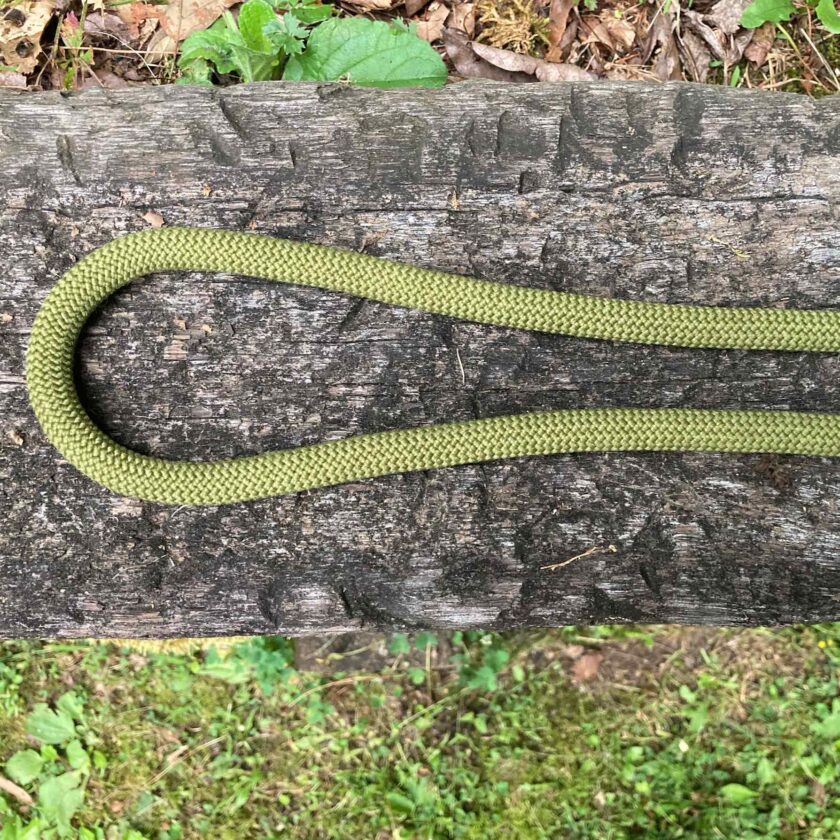
Scaffold Knot Step 2
Pass the working end over the standing line.
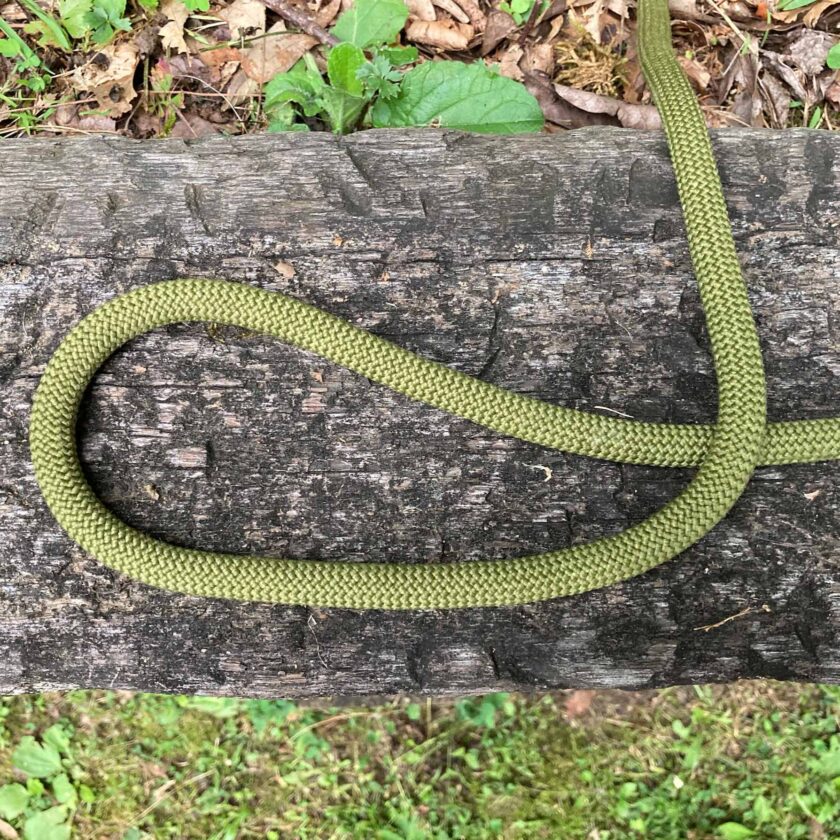
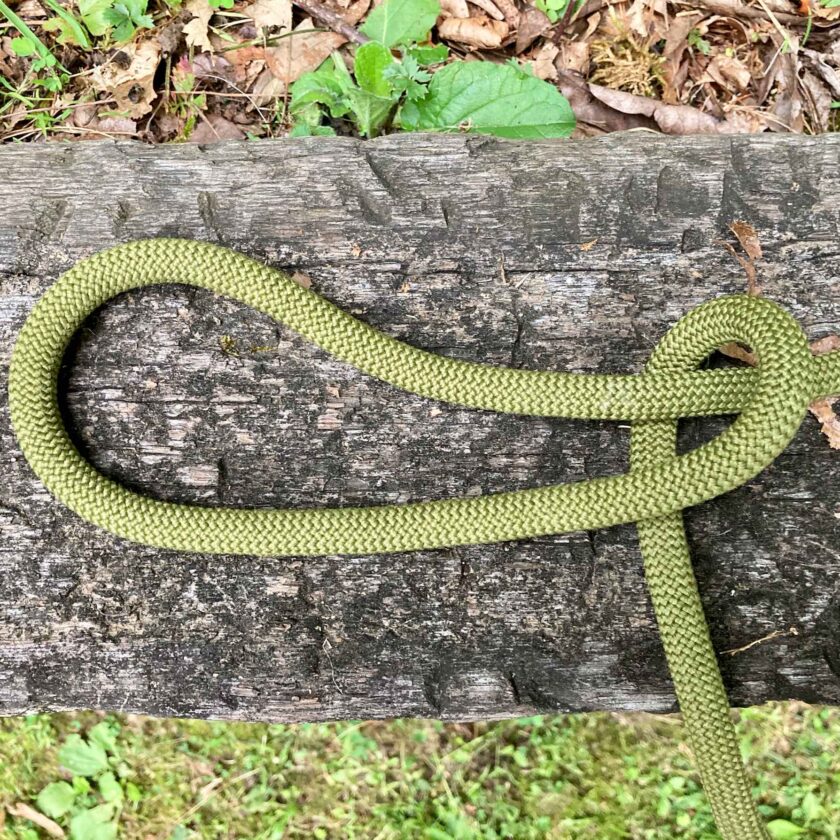
Scaffold Knot Step 3
Wrap it around the standing end and back over the previous loop.
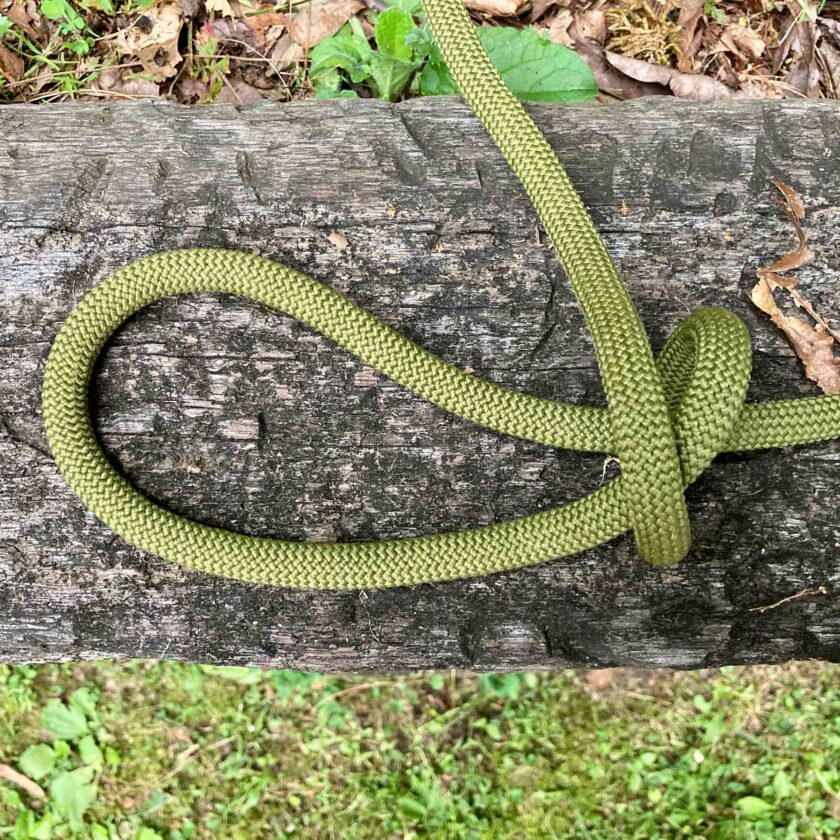
Scaffold Knot Step 4
Wrap the working end around once again. At this point it should begin to look like half a Double Fisherman’s.
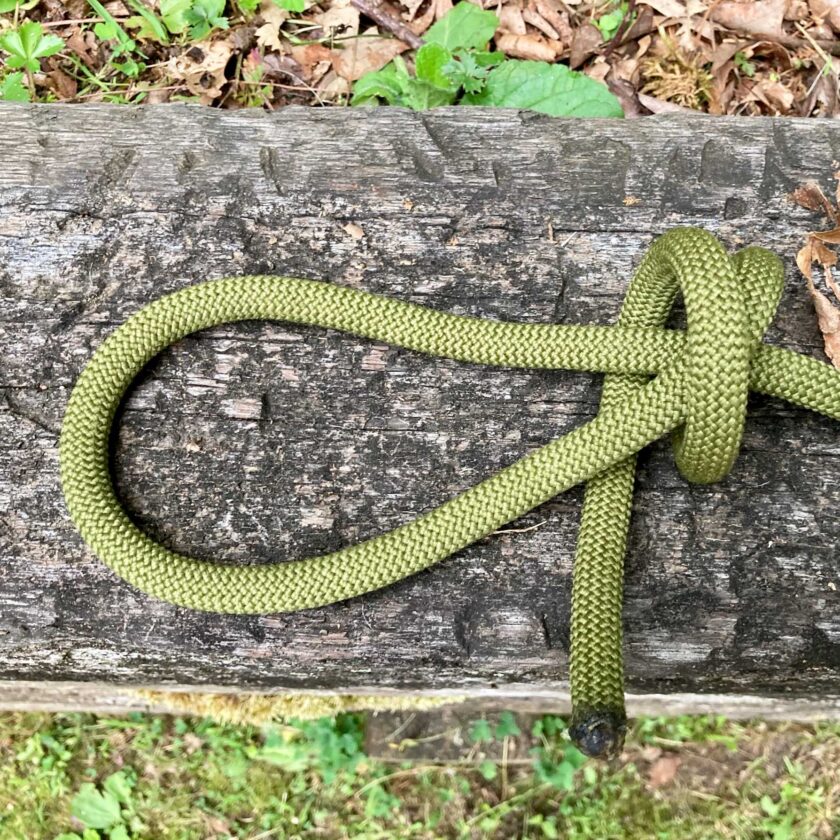
Scaffold Knot Step 5
Wrap the working end the rest of the way around, and pass it back through the two loops you have created.
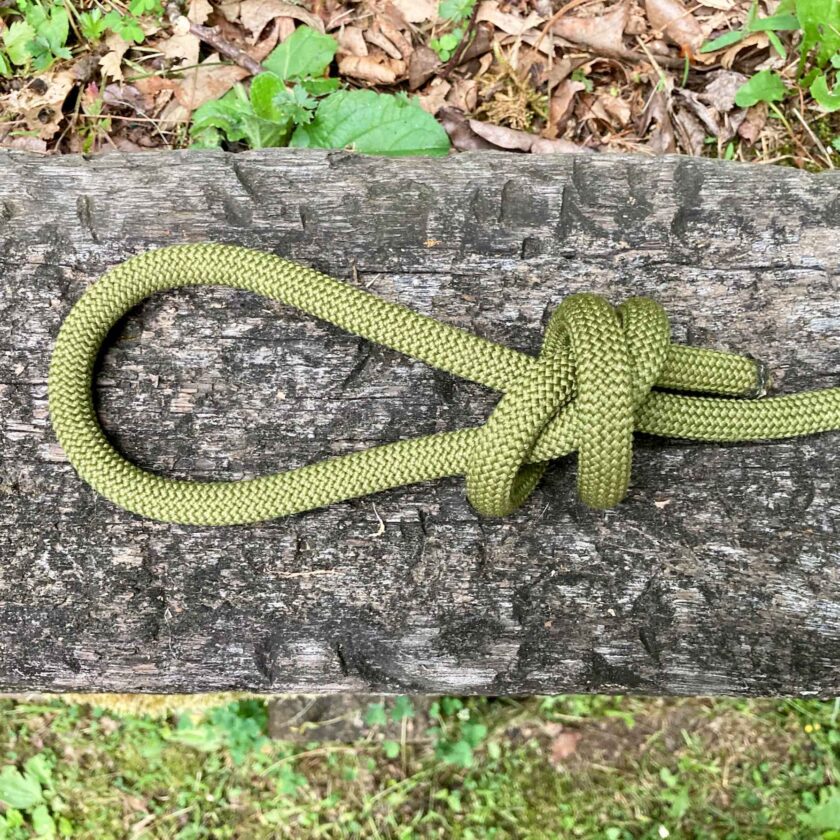
Now clean it up and it should really look like half a Double Fisherman’s now.
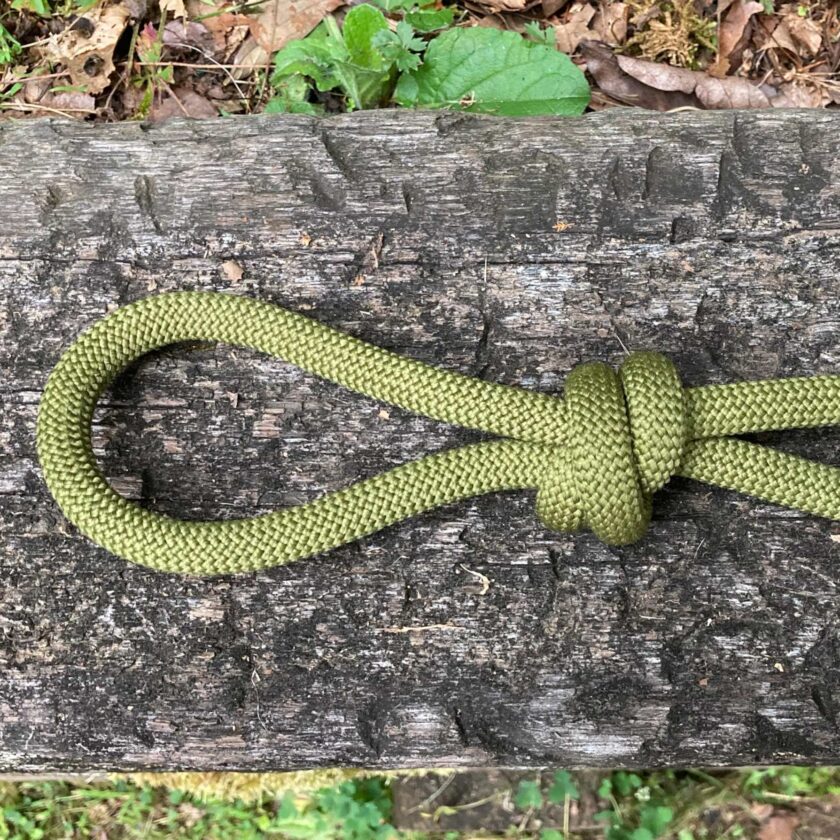
Scaffold Knot
To tell if you’ve tied this correctly you’re going to look for the same hallmarks you looked for in the Double Fisherman’s: “bars” and “X”s, only half the number of the Double Fisherman’s. The two “bars” are the two side-by-side strands of line.
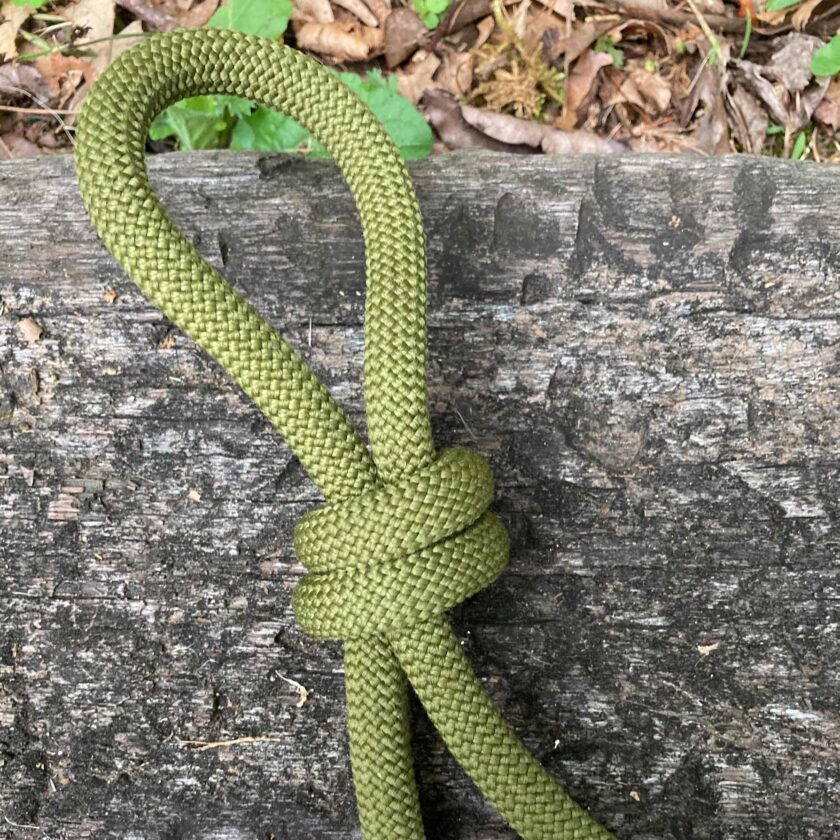
The “X” is the two crossed lines.
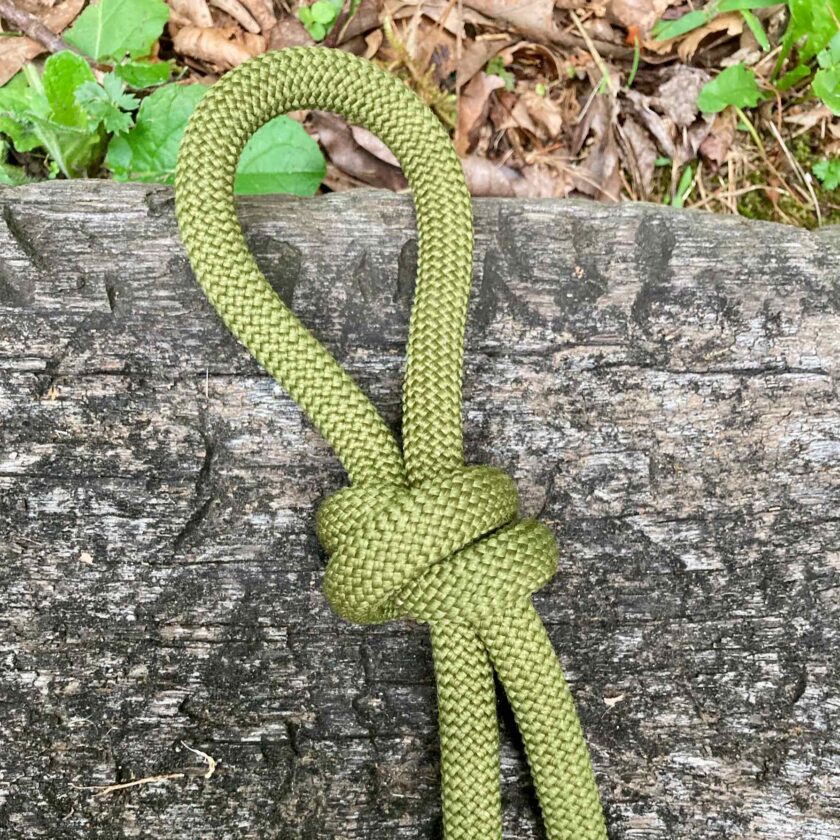
Your knot should now easily slip allowing you to increase or decrease the size of the loop. This should be suitable for tightening down on something as small as a carabiner, or something much larger, as illustrated below.
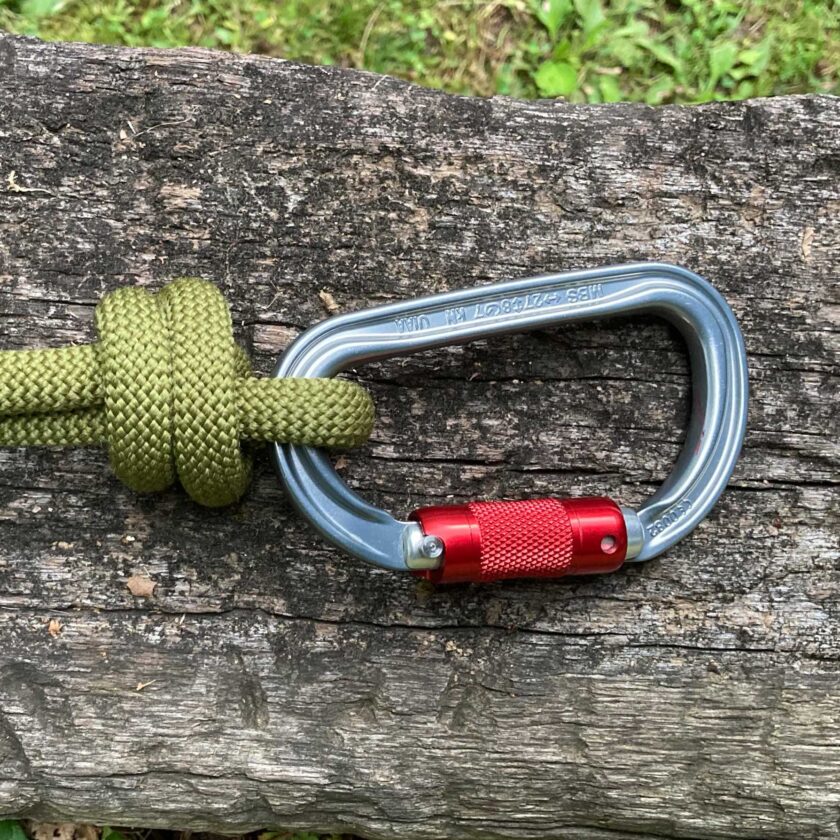
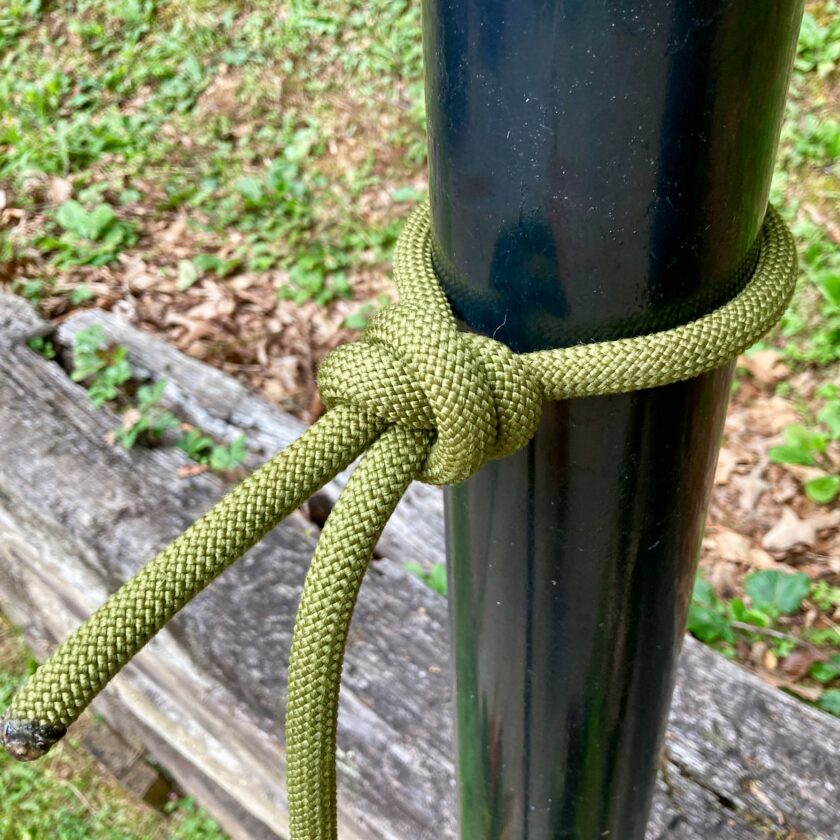
And that is the scaffold knot! That’s it for this week but stay tuned. And be sure to let me know if you have any specific knot requests.





